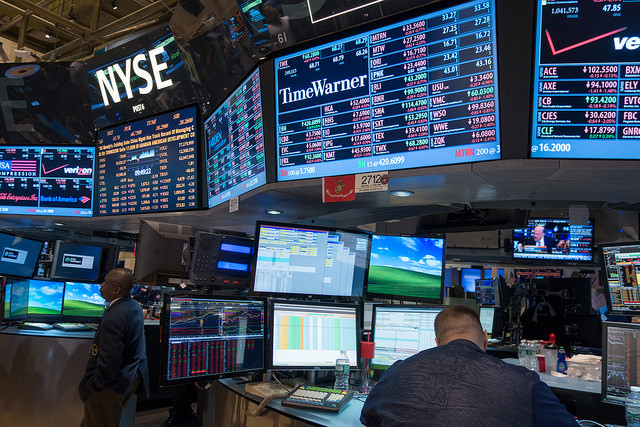Despite a slowdown in trade globalisation, it looks like equity markets are more globalised than ever. When one market falls, the contagion quickly spreads to bring the others down as well. This is a change from the past. In the old way of thinking about the world, the US sneezed and the world caught a cold. The S&P 500 was always viewed as the leading indicator for global equity markets. But the perception since last summer is that it is the Chinese equity market that is doing the sneezing.
Figuring out whether a drop in one equity market causes a drop in another is a tricky task. Just because the fall of one equity market is followed by a fall in another, does not necessarily mean that the first caused the fall in the second. To assume so would make you guilty of the logical fallacy of post hoc ergo propter hoc, or “after therefore because of”. There could always be a third factor that is driving both equity markets down, but it so happens that the effect has fed through to one market earlier than the other. But given we can never test everything, there will always be the possibility of a third factor that we did not include.
That is why proper science (as opposed to the dismal science of economics) is based on the idea that you can never prove anything, only disprove something. And here at least economics, or more precisely, econometrics, can help us out. We can figure out if one equity market is good at predicting changes in another equity market. This is known as predictive causality (using a test named after the late Nobel-prize winning economist Clive Granger). If changes in one market are useless at predicting the change in another market, we have at least disproven the causality. If it is useful, then we have failed to disprove the causality (even if we cannot ever prove it).
Things get a bit more confusing when we realise that the causality can actually run in both directions. So a drop in the Chinese equity market might be predictively causing a drop in the US equity market, yet at the same time there is a feedback loop whereby US equities are predicting subsequent moves in the Chinese equity market. As so often in economics, it is hard to figure out whether the chicken or the egg came first.
Sure enough, over the last decade or so the S&P 500 and the Shanghai Composite have both predictively caused moves in each other (see chart), sometimes at the same time. Some correlation is always likely, so readings above 80% probability or so start to become statistically significant (shaded darker). Between 2003 and 2005 the two moved pretty much independently, and then moves in the S&P 500 started to affect the Shanghai composite. The run-up in US equities was good at predicting a subsequent run-up in Chinese equities (albeit with a much larger proportional increase in China).
But then coming into late 2007 and 2008 it was China’s turn to take the driver’s seat, becoming a good predictor of the US. Once the financial crisis hit the causality went both ways, reflecting the global nature of the crisis.
But for the next few years, up until the end of 2011, the S&P 500 was clearly dominant. It was an effective predictor of Chinese equities (and probably most other markets as well). But this is a good example of where a third factor likely came into play. This was the period when the Fed started its quantitative easing, pushing investors out of government bonds and triggering a search for yield. So investors moved into progressively riskier assets: first US equities and then emerging market equities.
Equity markets started to reassert their independence up until the taper tantrum. Once Fed chair Ben Bernanke announced that QE would not continue forever, the effects of QE on investment appetite went into reverse. Investors started to retreat from emerging market equities first, so the causality flipped the other way. Chinese equities became a better predictor of US equities.
Since last summer the gyrations of the Chinese equity market became a clear predictor of what would happen in the US. This does not necessarily mean it was the only factor, or even the major factor, just simply that it led the moves in the US. Ask most investors and they will tell you that China is the dominant factor.
There may be some good reasons for this. Firstly, the Chinese economy has been growing rapidly (even if it has slowed down) so it is an ever larger share of the world economy. Secondly, equity markets are very often dominated by global firms who earn revenues from many other markets. So US firms with large exports to China should be reacting to downturns in China (that is, assuming Chinese equity markets are representing the real economy, which is another question entirely). Lastly, the weakness in the equity market brought about a depreciation in the CNY against the USD, even as the People’s Bank of China had to expend a lot of reserves to prevent too rapid a depreciation. Not only is currency depreciation likely to be bad for US exports to China, but the selling of reserves constitutes a substantial capital outflow, which is bad for financial markets.
But one consequence of the closer links between the Chinese equity markets and the US equity markets is that the US equity market is, almost by definition, telling us less about the US economy. The equity markets may merging, but that does not mean the economies are.
Joshua McCallum and Gianluca Moretti are part of the Fixed Income team at UBS Asset Management.






 By Fórmate a Fondo
By Fórmate a Fondo